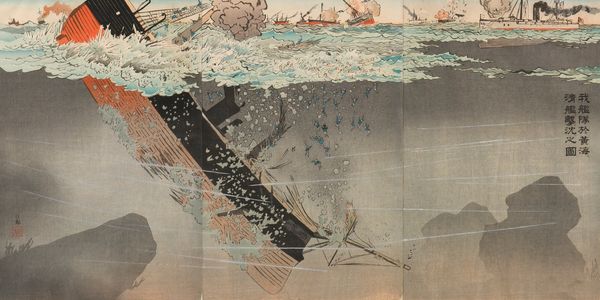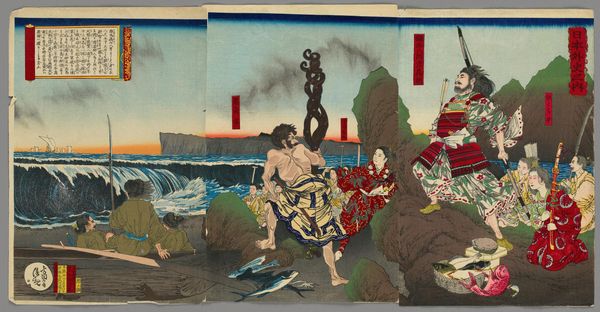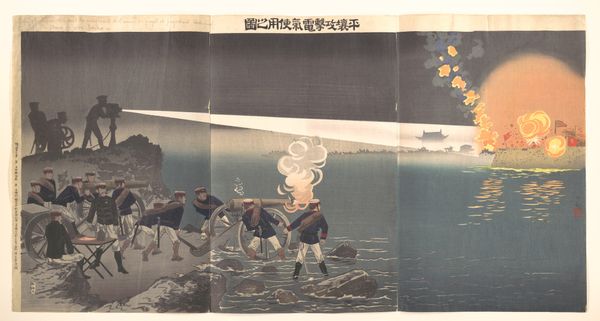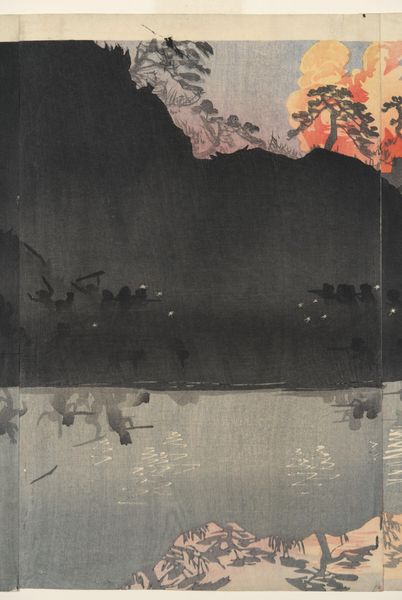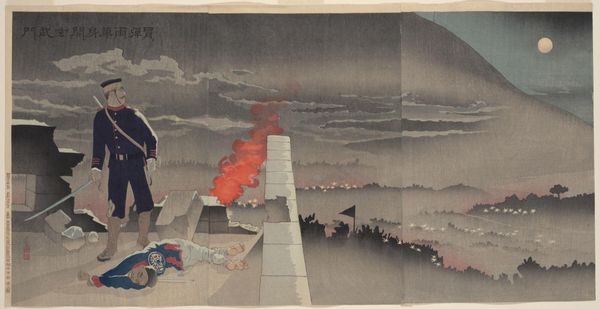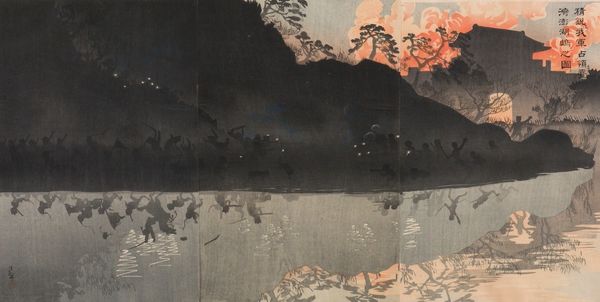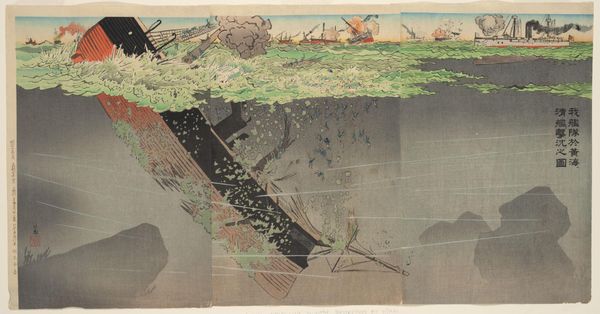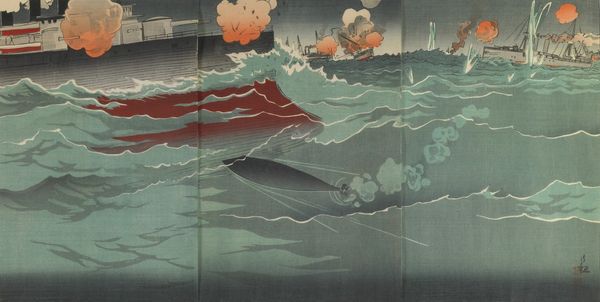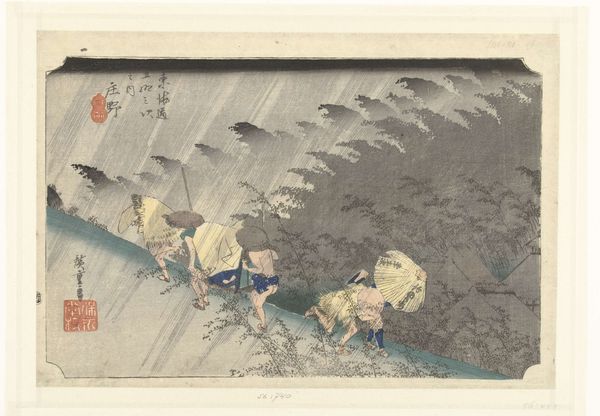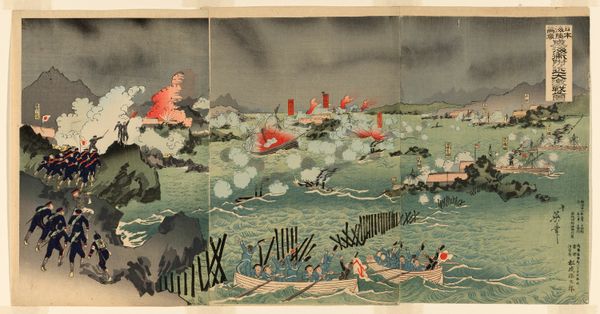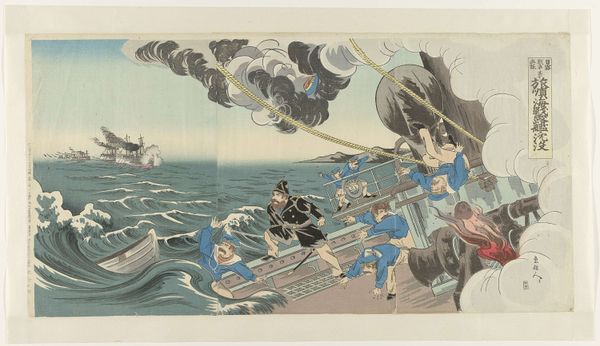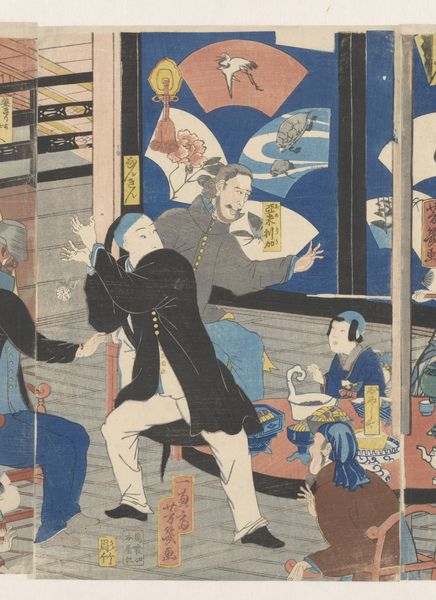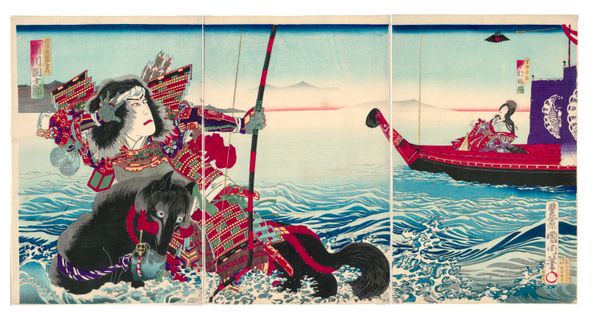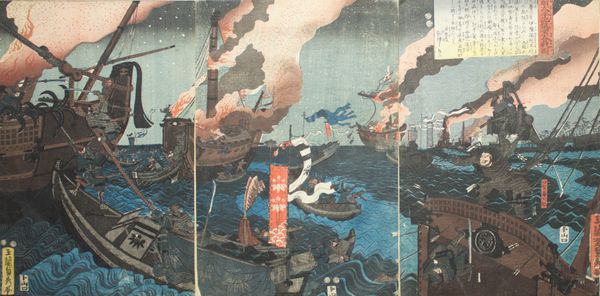
Copyright: Public Domain: Artvee
Curator: The somber hues dominating this composition evoke a palpable sense of unease and the impending drama of conflict. Editor: We're looking at a woodblock print created by Kobayashi Kiyochika in 1894 titled, "The Use of Electricity during the Attack on Pyeongyang." Curator: Electricity as a tool of war, weaponizing progress; a clear demonstration of the dark underbelly of modernity. The artist's choices immediately frame this through a narrative of technological advantage versus, well, the illuminated target. I see it as a visual metaphor for the disruptive potential of innovation when unleashed on traditional power structures. Editor: Absolutely. It is vital to contextualize Kiyochika’s position and the historical milieu. This print was produced during the First Sino-Japanese War. Consider how the socio-political climate—a Japan aggressively expanding its sphere of influence—might shape not just the image, but its reception and distribution among the public at the time. It undeniably promoted a vision of Japanese military might empowered by technological prowess. Curator: Indeed. Beyond the nationalistic propaganda, there is a deeply unsettling aspect. The stark beam of light—so modern—cuts through the darkness. What does this new, technologically-enhanced, form of seeing mean for concepts of the battlefield, surveillance, and the human cost of conflict? I think there’s commentary here on visibility, who is seen and who remains unseen in such power dynamics. Editor: I concur that Kiyochika brilliantly illustrates this clash, this paradigm shift, capturing the nascent stage of modern warfare’s introduction. His skill lies in conveying a powerful image but also, in shaping and reflecting the dominant narrative within Japan's socio-political aspirations and strategic expansion within Asia. What lessons, what reflections do we draw in the present when re-examining this artwork through the layers of history? Curator: It asks us to think about technological progress as neither neutral, nor inevitable, but enmeshed in a complex web of power, ideology and their visual representation in society. Editor: And to remain mindful how institutions of power—through artistic expression—participate in the articulation and legitimization of geopolitical ambition.
Comments
No comments
Be the first to comment and join the conversation on the ultimate creative platform.
